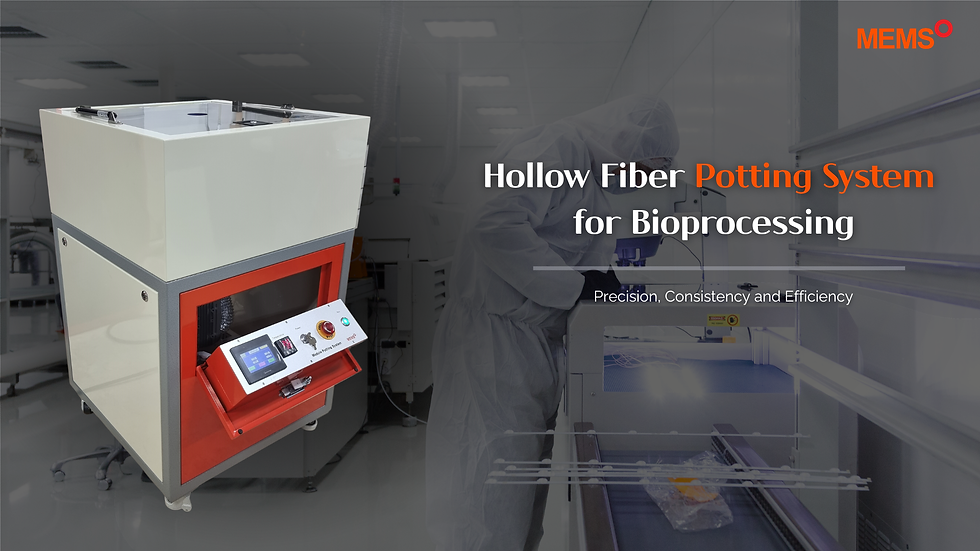How Membranes Protect Trillions in Chip Production
- denis7884
- Jun 2
- 4 min read
One microscopic contaminant can erase $500,000 in seconds and bring a chip fab’s production to a grinding halt. With transistors now smaller than 2 nanometers—far below the wavelength of visible light—the margin for error has disappeared entirely. This vulnerability fuels a booming global demand for ultrapure chemicals and advanced filtration systems. As the semiconductor market grows, the need for membranes that deliver unprecedented filtration precision has never been greater.
Fabs operate in environments up to 10,000 times cleaner than hospital operating rooms, allowing no more than 10 particles per cubic meter of air. Ultrapure water (UPW) is purified to levels a million times cleaner than tap water. Systems continuously filter and monitor gases, solvents, and airflows with military-grade precision. Valued at over $600 billion in 2024 and projected to exceed $1 trillion by 2030, the semiconductor industry underpins devices from smartphones to AI supercomputers. Demand surges not only for chips but also for the ultrapure chemicals, filtration and contamination-control technologies essential for production.
Membrane Technology and Its Demands in Semiconductor Manufacturing

Chip fabrication at the nanoscale depends on filtration that eliminates even the smallest threats to performance. This process centers on membranes engineered to block particles smaller than 0.1 microns and to withstand temperatures soaring above 80°C and aggressive chemicals like hydrofluoric acid.
One of the most demanding uses of these membranes is in producing ultrapure water (UPW). Each silicon wafer is rinsed more than 50 times during processing. Ordinary tap water contains around one million particles per liter. UPW must have fewer than 100. Reverse osmosis removes the bulk of contaminants, but it's the ultrafiltration membranes—typically made from polyethersulfone (PES) or polytetrafluoroethylene (PTFE)—that polish the water to this extraordinary purity. At this level, even a single sodium ion can interfere with a transistor’s performance.
To achieve this purity, membranes must resist highly corrosive compounds like hydrofluoric acid and potassium hydroxide for extended periods. Materials such as PTFE, PES, and advanced ceramics provide the necessary chemical stability and thermal endurance.
Air cleanliness is no less critical. Cleanrooms used in chip manufacturing rank among the most sterile environments on Earth. ISO Class 1 standards allow fewer than 12 particles per cubic meter of air—compared to around 35 million in a typical city street. Air handling systems deploy HEPA and ULPA membrane filters to trap airborne particles as small as 0.12 microns. Even microscopic dust can settle on a wafer and cause defects that won’t be caught until final testing—when the cost of failure is already locked in.
Water management presents another pressure point. A single fab can consume over 10 million gallons of water per day. To meet both environmental standards and cost controls, fabs increasingly turn to membrane-based water recovery. Systems such as membrane bioreactors (MBRs) and nanofiltration units reclaim rinse water, stripping out metals, surfactants, and residual chemicals. These membranes must handle fluctuating loads, resist fouling and perform reliably across thousands of filtration cycles. As water scarcity intensifies, so does the need for efficient, high-throughput recovery systems.
Even membrane production is a science of precision. Manufacturers often form polymer membranes through phase inversion, a method that engineers pore size at the molecular level. Ceramic membranes made from zirconia or alumina undergo sintering at over 1,000°C to ensure durability and consistency. Once fabricated, membranes are assembled into formats such as hollow-fiber bundles, spiral-wound cartridges, or pleated sheets—each optimized for high surface area and minimal dead zones. Some are further enhanced with chemical coatings or nanostructured surfaces to resist fouling.
Membranes touch every stage of semiconductor manufacturing—from the first wafer rinse to the final particle in cleanroom air. Their materials, structure and durability directly determine whether fabs can meet today’s atomic-scale demands. As chips become smaller and cleaner, the membranes behind them must evolve just as fast.
This evolution begins not in the fab, but in the casting lab. Fabrication methods must now deliver membranes with flawless pore structure, extreme chemical resistance and nano-level uniformity—consistently and at industrial scale. That precision foundation allows engineers to create membrane manufacturing systems with unparalleled control.
From Precision Membranes to Micro-Scale Innovation: What MEMS Devices Offer
To consistently produce membranes with flawless pore structure, extreme chemical resistance and nano-level uniformity at industrial scale, fabrication systems require extraordinary precision and repeatability. MEMS delivers exactly that. Our flat sheet casting system controls membrane thickness down to 100 μm with less than ±3% deviation. Each membrane begins with a polymer solution or dope prepared to exact chemical ratios. Even a 0.5% variation in viscosity can skew pore distribution. An adjustable casting knife spreads the solution onto tempered glass and sets the final membrane thickness—typically between 80 and 200 μm. Sensors monitor edge-to-edge uniformity in real time.

The cast film then enters a coagulation bath, triggering phase inversion and forming the membrane’s porous structure. Parameters, such as bath temperature and dwell time, control pore size, often between 10 and 100 nanometers. After solidification, membranes dry and may undergo heat treatment or chemical coatings to improve fouling resistance and mechanical strength. Quality control rigorously tests products for tensile strength, permeability and particle rejection. For semiconductor use, the MEMS casting system blocks over 99.999% of particles above 0.05 microns while withstanding corrosive exposure for weeks.
At this microscopic scale, a pore just 10 nanometers wide can decide the fate of a trillion-dollar chip. MEMS devices shape unseen worlds where precision opens new possibilities. Every molecule passing through holds a choice. In these silent layers, progress whispers. Here lies the threshold—between what is and what could be. One membrane. One moment. Endless potential.
Interested in MEMS for upscaling? Let’s discuss your needs—our team is here to help. Explore further at www.pmems.co.kr






Comments